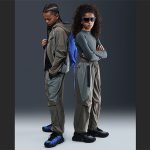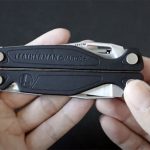SnowSports Industries America said chain stores sales were up by 4.2 percent for August through November compared to the same period of 2001. In dollars, that translates to $132.9 million in sales so far this year compared to $127.6 million in 2001. The unit sales tracked behind last year (-5.5 percent).
“The hottest trend right now in chain stores are the snowdeck/skates,” said Julie Lynch, Director of Market Research for SnowSports Industries America (SIA), the not-for-profit industry trade group that represents manufacturers and distributors of snow sports products.
The overall picture is brighter. When looking at both specialty and chain store numbers combined through the end of November, sales were up 6.5 percent in dollars compared to 2001. The sales for all stores were $665.9 million compared to $625.4 million.
Chain Store Sales
All equipment (alpine, snowboard and Nordic) for chain stores was up 10.2 percent to $41.3 million from $37.5 million in 2001. Alpine gear was up 3.8 percent to $19.4 million as compared to $18.7 last year. Snowboard equipment was a bright spot at chain stores; it was up 23.3 percent or $20.7 million in sales. Sales for snowboard equipment in 2001 tracked at $16.8 million.
Apparel was selling steady at chain stores during the August through November time period, up 6.3 percent to $54.1 million as compared to $50.8 million last season. Accessories did not fair as well, declining 4.4 percent to $37.6 million as compared to 2001 which was $39.3 million.
Snowboard Equipment Sales are Strong
Alpine ski sales fell 11.8 percent to $7.3 million while units were down 29 percent, excluding ski systems. Ski systems surged ahead over last year and the retail sales price dropped from $600 to $488 this season. Midfat skis at $258 average retail price represent 43 percent of unit sales. Junior skis are flying off the shelves with an increase of 58 percent in dollars and 51 percent in units. Alpine boots did better than last year. Boots jumped 10.8 percent to $6.8 million with all boot categories making significant gains while bindings fell 20.9 percent to $2.6 million. Poles are up (66.1 percent) to $1.2 million.
Snowboard sales in dollars were ahead 12.8 percent, although units tracked 6.3 percent behind last season. According to Jim Spring of Leisure Trends Group, “This was due to the lack of old boards. However, one factor is that prices lifted to a lofty $182 compared to 2001 when boards retailed for $151.” All mountain boards sold the best in chain stores. Riders appear to be updating bindings and boots. Snowboard boot sales were up 26.1 percent to $6.8 million and bindings were up 42.4 percent to $5.1 million.
Junior Apparel is Hot
Apparel tops made just slight gains, increasing only 2.8 percent to $36.1 million. Junior apparel accounted for 20 percent of the apparel top category unit sales. Both junior insulated parkas and shell parkas gained in dollars, increasing 43.5 percent and 20.8 percent, respectively. Units of soft shell parkas have slipped 22.3 percent. In chain stores, vests, fleece and sweater sales were all soft.
Like tops, bottoms gained only 2.0 percent in dollars to $8.8 million. Carry-over accounted for 54 percent of all alpine bottom sales. Shell waist pants were the only category to make any significant gains, increasing 18.4 percent in dollars.
Snowboard apparel accounted for most of the increases in the apparel category. Tops were up 49.4 percent in dollars while snowboard bottoms gained 37.8 percent. Men are buying tops and women are buying bottoms.
Accessories Business Dries Up
The accessories business dried up in November. Equipment accessories were down 3.3 percent to $16.3 million. The hottest sellers are helmets (up 81.3 percent in units) and snowdecks/skates (up 164.3 percent in units). Apparel accessories had a tough time of it also. This category was down even more at 5.2 percent to $21.2 million. The only categories to see any gains were gloves, base layers, mitts and headwear. The SIA Retail Audit tracks and reports sales in all snow sports product categories. This is the second of six reports that will look at sales through March 31, 2002, the end of the winter season.















